Globe-Net: A Primer on Climate Change and Carbon Trading
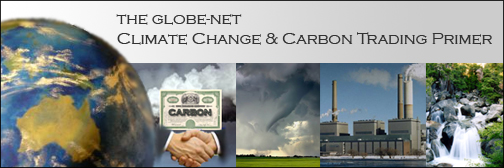
Climate change is one of the most important global issues of our time and also one of the most controversial. Amidst the global debate, vital facts on this matter are often lost. Despite extensive coverage on climate change, many still are not clear on its full implications, or are confused by the acronyms, the players involved, and the contradictory studies and reports.
Fact number one (and this has been proven conclusively by the scientific community) is that the earth’s atmosphere is warming and that human-caused greenhouse gas emissions are contributing to this trend. Global warming is real, it’s here and it will continue for some time with consequences that will affect every species on the planet.
Fact number two (and this too has been proven conclusively) is that if we don’t do something about it now, the problem will simply become worse and the price tag for inaction will increase accordingly.
Fact number three is that much can be done to lessen the impacts of climate change and to slow down the rate of temperature growth by reducing the amount of greenhouse gas emissions caused by human actions. But whatever we do, all nations have to work together to make the necessary changes.
Thus the main issues before political, business and societal leaders today are how to deal with the inevitable impacts of climate change, and how to slow down further global warming by reducing man made greenhouse gas emissions.
The first major international effort to develop such a climate change strategy was the United Nations Framework Convention on Climate Change, an agreement signed by 189 countries in 1992. The Framework eventually led to the formation of the Kyoto Protocol in 1997. The Kyoto Protocol, which has been ratified by 164 countries, including Canada, the European Union, China, and India, establishes specific targets for emissions reductions for industrialized countries.
Under the Kyoto Protocol, Canada agreed to reduce its greenhouse gas emissions to six percent below 1990 levels between 2008-2012. Instead, our greenhouse gas emissions in 2004 were 26.6 percent above 1990 levels, which translates into 34.6 percent above the Kyoto Protocol target.
Many now question whether that target was realistic or even achievable. On reflection, it appears that too little analysis was undertaken by the government of the day on what would be required to achieve the Kyoto targets.
The federal government is re-examining Canada’s emissions reduction targets and what will be required to achieve real results. The recent tabling of the Clean Air Act was the first step in what has been promised as a series of moves to establish a credible and attainable Climate Change Plan.
One of the main features of the Kyoto Protocol was the establishment of market-based mechanisms to stimulate the development and deployment of technologies that could help reduce carbon-based greenhouse gas emissions and conserve energy.
In broad terms, countries could meet their emissions reduction targets by lowering their own emissions; by purchasing carbon credits (which are essentially permits to emit greenhouse gases); or by investing in projects that would reduce emissions in other countries. The ability to earn and to trade carbon credits has given rise to a new market for carbon credits. These were first deployed in the European Union, but now are becoming more widespread. Worldwide, it is estimated that the emerging market for carbon credits is now worth more than $22 billion and is rising fast.
The main benefit of such ‘trading systems’ is the incentive they provide to the deployment of new technologies that can reduce greenhouse gas emissions or conserve energy. Renewable energy technologies that harness wind, solar and geothermal energy sources have been the prime beneficiaries of such investments. Biofuels are also an emerging area of interest, as carbon dioxide is absorbed from the growth of plants that are used to create biofuels.
Notwithstanding the growth in alternate and renewable energy sources, energy from fossil fuel sources will continue to dominate the world’s energy supply system for some time. Thus it is important that ways are found to use coal, oil, and gas more efficiently and to generate fewer greenhouse gas emissions in the process. Energy conservation is also an opportunity area for immediate gains in emissions reductions, both for developing and industrialized nations,as is reducing deforestation, which also helps preserve the earth’s natural carbon storage capacity.
It is clear that governments world wide have accepted the realities of climate change, and that the private sector has awakened to the opportunities and risks involved. A recent report by the Carbon Disclosure Project, a coalition of investors with $31.4 million in assets, revealed that the private sector is engaging climate change at fundamental levels, and that investors also are signaling their recognition of the realities of climate change, and more specifically, the risks to invested capital associated with it.
With these general thoughts in mind, the GLOBE-Net Primer on Climate Change and Carbon Trading sets out the basic facts on both the science and the business of climate change. GLOBE-Net readers will be better able to sift through the very complex and often confusing array of facts and choices before us as we come to grips with what clearly is the most critical challenge facing mankind today.
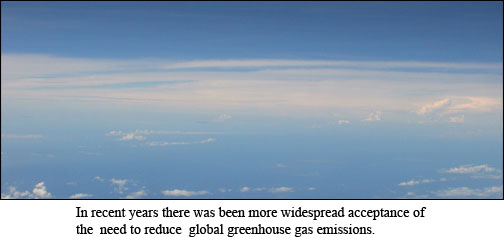
What are greenhouse gases (GHGs)?
Greenhouse gases are substances that exist in the earth’s atmosphere that allow sunlight to reach the planet’s surface but can capture heat reflected back towards space, thereby contributing to a warming of the earth’s atmosphere. Normal levels of these gases help to insulate the earth and create a habitable planet.
Elevated levels of these gases are linked to historical rises in global temperature, and scientific research has concluded that human-caused emissions of greenhouse gases most likely are contributing to the more rapid temperature increases experienced in recent decades. This phenomenon, which is expected to continue and to accelerate in the coming century, is known broadly as climate change, or global warming.
Most greenhouse gases exist naturally, but human activities, primarily the generation of energy through combustion of carbon-based fossil fuels, are pushing atmospheric levels of these substances higher than usual.
Humans cause significant emissions of greenhouse gases that include: carbon dioxide (CO2), methane (CH4), nitrous oxide (N2O), hydrofluorocarbons (HFCs), perfluorocarbons (PFCs), and sulphur hexafluoride (SF6).
Carbon dioxide is the largest component of human GHG emissions in terms of volume, and such gases are usually measured in terms of carbon dioxide equivalent (CO2e), a metric used to compare the contribution to global warming of various GHGs. For example, the global warming potential of methane is rated as 23 over 100 years, meaning that an emission of one metric tonne of methane is equal to emissions of 23 tonnes of carbon dioxide in terms of contribution to climate change.
Atmospheric levels of greenhouse gases have nearly doubled since large-scale industrialization began around 150 years ago, from 280 parts per million CO2e to 430 ppm. The World Meteorological Organization recently reported that global atmospheric concentrations of carbon dioxide reached their highest levels ever recorded in 2005. Current atmospheric levels of carbon dioxide, nitrous oxide, and methane are higher than those in pre-industrial times by 35.4%, 18.2% and 154.7%, respectively.
The links between greenhouse gas levels, human activities such as the combustion of fossil fuels, and global temperature variability are the core elements of the climate change issue.
Where do GHGs come from?
Energy, used for electrical generation and transportation, makes up the single larges component of human-caused greenhouse gas emissions, mostly through the combustion of fossil fuels. Coal, oil, and natural gas are all hydrocarbon-based fuels that emit carbon dioxide when consumed, and provide the majority of the world’s energy supply.
Deforestation and changes in land use are also major contributors to greenhouse gases, as carbon is released from storage in plants and trees. Landfills are a source of methane as waste decomposes.
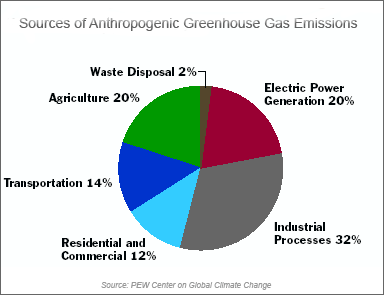
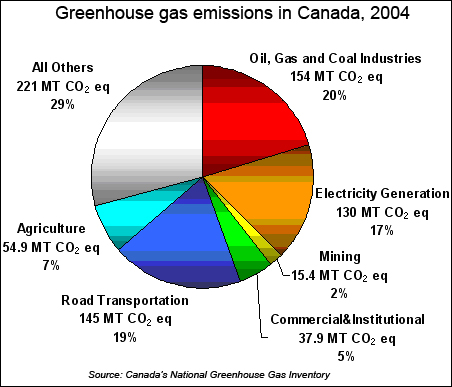
Canada is a net energy exporter, producing fossil fuels that are consumed in other countries. This puts the country in a particularly difficult situation in regards to climate change.
Canada possesses close to 200 Billion barrels of estimated crude oil reserves, of which 175 Billion are located in the Alberta oil sands. This is ranked second among oil producing nations in terms of total reserves, and Canada is currently 9th in total crude oil production. Canada is the largest crude oil supplier to the United States, ahead of Saudi Arabia.
The oil sands are important to our national economy, but also cause large greenhouse gas emissions and other environmental pressures. Output is expected to triple by 2015, with corresponding increases in emissions. Responsible oil and gas firms have improved efficiency and reduced greenhouse gas emissions per barrel of output, but with the expected growth, the oil sands will remain a key contributor to Canada’s rising emissions profile.
Reconciling our status as an energy supplier with reductions in greenhouse gas emissions is a priority for the federal government, which is seeking acknowledgement of our role in supplying other nations with fossil fuels.
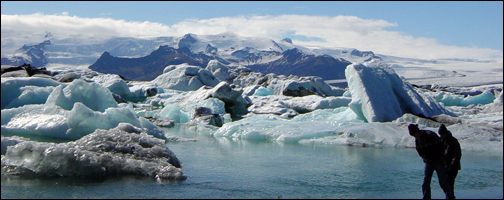
Who determines whether climate change is real?
There is little argument that the earth’s climate is changing and that average global temperatures are rising. Global warming is a reality, and the full impacts of these changing climatic conditions on weather patterns, agriculture, water and wildlife resources and ocean levels are still unclear. Where there is continuing debate is on the extent to which global warming is caused by human activity.
There are several key agencies that are active in determining the impacts of climate change and the contributions made to it by human activity.
Here are some of the key scientific conclusions surrounding climate change research:
- The global average surface temperature has increased since 1861. Over the 20th century the increase has been between 0.4 and 0.6 degrees Celsius.
- Five of the six warmest years on record have occurred since 2001.
- Northern Hemisphere spring and summer sea-ice extent has decreased by about 10 to 15% since the 1950s. Arctic summer sea ice levels may decline by half by the end of the century, with some models showing near-complete disappearance of summer sea ice.
- The atmospheric concentration of carbon dioxide (CO2) has increased by 31% since 1750. The present CO2 concentration has not been exceeded during the past 420,000 years and likely not during the past 20 million years. The current rate of increase is unprecedented during at least the past 20,000 years.
- About three-quarters of the anthropogenic emissions of CO2 to the atmosphere during the past 20 years are due to fossil fuel burning. The rest is predominantly due to land-use change, especially deforestation.
- The Intergovernmental Panel on Climate Change (IPCC): This research body was established by two United Nations Agencies: The World Meteorological Organization (WMO) and United Nations Environment Programme (UNEP) to assess the scientific, technical and socio-economic information available on climate change, to advance understanding of the issue and its potential impacts, as well as options for adaptation and mitigation.
- The IPCC has released three Assessment Reports so far, with the fourth expected in early 2007. Its earlier assessments supported the theory that anthropogenic emissions of greenhouse gases are contributing to climate change that is warming the planet.
- Given current emissions trends a rise in global temperature of between 2 and 4.5 degrees Centigrade is predicted to occur within the century as a result of a doubling in carbon levels in the atmosphere. The report notes that Arctic sea-ice levels have been consistently shrinking over the past decades, and that five of the six warmest years on record have occurred since 2001.
- The IPCC report, as with many other scientific studies, employs the use of observed temperature data as well as observations of tree rings, ice cores, and other indicators of historical climate. The most famous display of this data is in the so-called “hockey stick” graph, which shows a sharp increase in global average temperatures that coincides with the industrial revolution and increased human consumption of fossil fuels.
- While an early version of the data used for this graph contained a statistical anomaly that led some to discredit its validity, that has since been resolved and most scientific bodies agree with its findings on a rise in global temperature. One version of the graph is shown below.
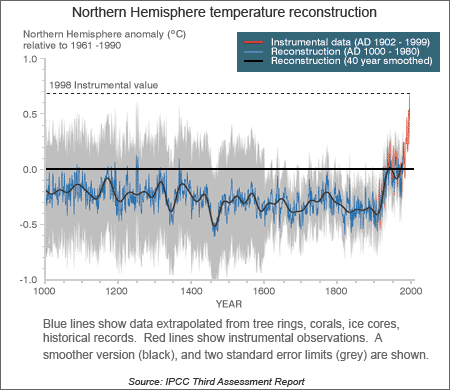
- The Arctic Climate Impact Assessment is an international project of the Arctic Council and the International Arctic Science Committee (IASC), to evaluate and synthesize knowledge on climate variability, climate change, and increased ultraviolet radiation and their consequences. It released its report in 2004, showing that the Arctic is warming at a faster rate than the rest of the globe. The ACIA predicts that summer sea ice levels will decline by half by the end of the century, with some models showing near-complete disappearance of summer sea ice. The consequences of warming in the Arctic will include: a rise in global sea levels, an increase in arctic marine traffic, a decrease in available food supplies for animals and indigenous peoples and other environmental impacts, according to the ACIA report.
- The United States Climate Change Program is the US’s top federal climate change research initiative. It’s most recent report resolved apparent discrepancies in climate data that showed warming and cooling in the earth’s atmosphere and on the surface. These discrepancies had been cited by sceptics of climate change, but the Program’s research effectively reduced those differences, and both atmospheric and surface temperature data now show a warming trend. The agency noted that “the evidence continues to support a substantial human impact on global temperature increases.”
- The Meteorological Service of Canada (MSC), which is a part of Environment Canada, monitors water quantities, provides information and conducts research on climate, atmospheric science, air quality, ice and other environmental issues. The climate change program is pursued at several research centers, including the Climate Research Branch’s modeling group (CCCma), the climate monitoring and data interpretation group (CCRM) and the climate processes and Earth observation group (CCRP). The Adaptation and Impacts Research Group (AIRG) conducts studies into climate change impacts and related adaption strategies.

What are the likely impacts of climate change?
The full effects of climate change are uncertain, as it is difficult to predict the level of temperature increase that will actually occur and the impacts that these changes will have on complex natural systems. At the lower level of projected temperature increases, impacts may be minimal, while at the higher end, catastrophic changes could occur that affect all human life. The IPCC notes that although a slight increase in temperature may be beneficial to some regions, the net impacts of climate change are likely to be negative for most areas.
Through melting of Arctic sea ice and continued retreat of glaciers around the world, global mean sea levels are projected to rise by between 9 and 88 centimetres by 2100. Many coastal areas and low-lying island states would be inundated with water, making areas uninhabitable or vulnerable to extreme weather. Coastal erosion, seawater intrusion into groundwater, and ecosystem changes are also predicted. Large-scale desertification could make much of the world’s agricultural land unproductive and uninhabitable. As many as 200 million people may be displaced by rising sea levels, flooding, and drought.
Melting of the Arctic may also free up a polar transportation route that is currently covered in thick sea ice, making the Northwest Passage a viable shipping route for up to 120 days compared to 20-30 days currently, predicts the ACIA. Melting of permafrost and a northward expansion of woodlands will have an effect on the ecosystem in Canada’s North, threatening species such as polar bears and caribou that depend on current climate conditions.
Evidence also points to an increase in pests and human diseases with a rise in temperature, though the extent of this has not yet been agreed upon by scientists. The pine beetle infestation in Western Canada is one example of the possible effects of climate change, as warmer than usual winters have allowed the non-native species to survive, damaging an estimated 10 million hectares of forest worth hundreds of millions of dollars and threatening the livelihood of at least 25,000 families.
Agricultural productivity in temperate zones may actually improve with small increases in temperature, while larger increases could threaten crops. Biodiversity has already been impacted in many areas as species migrate north to maintain their ideal climate, and birds and flowers respond to spring-type weather earlier in the year. Marine fisheries may experience positive and negative changes, with possible redistribution of species – more research on this subject is expected with the next IPCC Assessment.
An increase in extreme weather events, such as hurricanes, droughts, and fire has also been projected. Though a concrete link has yet to be established, scientists have shown that an increase in sea surface temperatures coincides with an increase in the number of intense hurricanes in the Atlantic. More volatile weather patterns are expected in most areas. Many insurance companies have responded by making climate change a major strategy consideration, offering products that encourage emissions reductions and mitigations strategies to limit losses. Leading companies such as Swiss Re consider climate change to be one of the most pressing business issues of this century.
In terms of predicting the economic impacts of these global changes, there is again a great deal of uncertainty. Some models predict losses in the GDP of developing nations of hundreds of billions of dollars per year by as early as 2010. A comprehensive economic review by former World Bank Chief Economist Sir Nicholas Stern estimates that climate change could cost the world economy 5 percent of its GDP, or around $3 trillion per year, equivalent to economic collapses such as the Great Depression; if wider impacts are taken into account, the projection leaps to 20 percent of world GDP, enough to cripple the global economy.
In general, the long-term economic impacts are very difficult to quantify, but certainly worst-case scenarios projected in climate models would have catastrophic effects on the livelihoods of billions of people worldwide, with corresponding volatility in the global economy. From a risk management perspective, many insurance companies are taking the position that the large-scale effects of climate change are simply too enormous to ignore.

What can be done about climate change?
This question has been widely considered governments around the world and by such global organizations as the United Nations for nearly two decades. In broad terms there are two avenues open to us: adaptation and mitigation. Adaptation involves minimizing the negative effects of likely or occurring climate change through precautionary measures. Mitigation involves a large-scale effort to reduce human-caused greenhouse gas emissions.
Scientific modeling has shown that stabilizing levels of greenhouse gases in the atmosphere could reduce or prevent damaging levels of climate change. Atmospheric levels of greenhouse gases are currently around 430 parts per million, compared to a pre-industrial level of 280 ppm. Stabilizing this concentration between 430 ppm and 550 ppm will help to reduce the most serious risks of climate change.
In the short-term, slight climate changes are expected to occur as global economies are projected to continue consuming fossil fuels for the majority of their energy supply. Adaptive measures that will need to be taken in many regions could include construction of sea barriers, altered agricultural methods, stockpiling of food, and improved protection against pests and diseases. Simply constructing buildings to withstand extreme weather events and maintain a constant temperature efficiently are some other adaptive measures that could be undertaken. Conservation efforts that will help northern peoples and animal species to cope with melting permafrost are also important examples of climate change adaptation.
As a result, adaptive measures may need to be taken in many regions. These could include construction of sea barriers, altered agricultural methods, stockpiling of food, and improved protection against pests and diseases. Simply constructing buildings to withstand extreme weather events and maintain a constant temperature efficiently are some small adaptive measures that could be undertaken in Canada. Conservation efforts that will help northern peoples and animal species to cope with melting permafrost are also important aspects of climate change adaptation.
Adaptation is generally overlooked in favour of mitigation efforts however, as reducing greenhouse gas emissions is the only way to slow climate change. Ways of reducing greenhouse gas emissions are well-known: improving energy efficiency, reducing fossil fuel consumption, diversifying energy supply by expanding the use of renewables, and decreasing deforestation. Energy use through the consumption of fossil fuels to generate electricity, for heating, and for transportation, is the source of most anthropogenic greenhouse gas emissions, so it is in this area that most new technologies have emerged.
Renewable energy such as hydroelectricity, wind, solar, biomass, geothermal and tidal power provide clear emissions reductions by displacing fossil-fuel consumption, but currently make up only a small portion of the world’s energy supply. Their usage is expected to increase nearly 60 percent by 2030, according to the International Energy Agency, although their total share of world energy supply is expected to remain relatively constant at 14 percent.
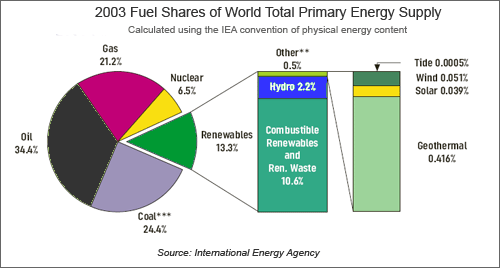
In many cases, these emissions-free energy sources are a viable alternative. Wind turbines are becoming larger, solar panels are more efficient, and the costs for renewable energy are showing signs of convergence with traditional energy sources, though hurdles still remain.
Bioenergy – using plants, trees, and shrubs as fuel – is also emerging as a major energy sector. Biomass can be converted into fuels such as ethanol and biodiesel, or combusted directly using advanced technologies that reduce air emissions. Bioenergy is considered ‘carbon neutral’ because growing the crops needed to produce fuel offsets the greenhouse gas emissions from combustion. While economic and technical challenges to the wide-scale use of biofuels remain, ethanol markets will continue to grow, and the UN Food and Agriculture Organization (FAO) projects that bioenergy could provide up to 25 percent of the world’s energy by 2025.
Hydrogen is also looked upon as a potentially major source of ‘clean’ energy in the future. This basic element is now being used in fuel cells to power buses and cars, and can also be deployed in large-scale power plants. When combusted, its only emissions are water vapour. Technical challenges must still be overcome surrounding the production, distribution, and cost of hydrogen technologies, but many believe the ‘Hydrogen Economy’ is well on its way.
Although the alternative energy sources listed above are sure to make up a growing component of the worldwide energy mix, most international organizations are projecting that fossil fuels will continue to dominate global energy generation until at least 2050. Faced with that reality, a push to demonstrate the use of ‘clean fossil fuels’ is underway. New technologies are emerging that allow for the gasification of coal to reduce its emissions, and one are of particular importance is that of carbon dioxide capture and storage.
Technologies now exist to capture carbon dioxide from point sources, and demonstration projects have established the viability of storing the gas for the long term in geological formations, abandoned oil wells, or deep sea reservoirs. In the case of the Weyburn project in Saskatchewan, injection of CO2 into an oil well for storage also results in the recovery of extra oil reserves. If fossil fuels must be combusted in the near-term future, then carbon capture and storage is likely necessary on a large scale to control global greenhouse gas emissions.
Energy efficiency is perhaps that largest area of opportunity for reducing the expected rise in global greenhouse gas emissions. The International Energy Agency has shown that that improved energy efficiency using today’s technologies can reduce expected growth in electricity demand by half, and cut the need for added generation capacity by one-third, even as global energy demand increases by fifty percent. Sustainable building techniques, efficient lighting technologies, and other existing products should not be overlooked for their energy and cost-saving potential.
Deforestation and the clearing of land for crops and pastures is a significant source of greenhouse gas emissions, and the loss of tropical forests is a vital issue that must be tackled along with energy use. The carbon-storage value of many forests exceeds the value of the marginal lands they provide when cleared, and reducing deforestation can be a significant measure that developing countries can be encouraged to take.
Applying these technology-based solutions on a large enough scale to make the needed emissions reductions is a challenge, however. One way to make this happen, is through the use of market-based incentives. This is where carbon trading becomes important.

Who regulates climate change and carbon trading?
The answer to this question requires that one first understand the international framework that governs the issue of carbon trading and who are the main players. The point of origin of this framework is the United Nations Convention on Climate Change (UNFCCC), an agreement signed by 189 countries around the world, setting general goals and rules for confronting climate change. It was reached at the United Nations Conference on Environment and Development in 1992 in Rio de Janeiro, Brazil. It was at this conference that the principle of sustainable development was popularized.
The UNFCCC is overseen by the United Nations Climate Change Secretariat. The most visible element of the UNFCCC is the Kyoto Protocol. It was adopted in 1997, and has since been ratified by 164 countries. Its main feature is the introduction of legally binding targets to limit or reduce greenhouse gas emissions for ‘Annex I Parties’, which consist of 35 countries and the European Economic Community. Canada is a signatory to the Kyoto Protocol.
The Kyoto Protocol contains two of the main features of one approach to greenhouse gas emissions reduction: a targeted limit, or ‘cap’ on the volume of emissions, and ‘carbon trading’, which allows the buying and selling permits to emit greenhouse gases. The concepts are related: When a mandatory cap is set, and emitters must reduce emissions or buy credits in order to meet it. Those who reduce further their emissions than beyond what is required can sell their excess credits to others who have not yet met their targets.
As an example, Canada is required to reduce its national emissions to six percent below 1990 levels for the period 2008-2012. To do so, Canada can reduce domestic emissions, and can also invest in emissions-reduction projects in developing countries to earn credits.
This ‘cap-and-trade’ approach is employed because it uses economic, or ‘market-based’ incentives to achieve emissions reductions. The rationale is that carbon trading allows emissions to be allocated in the most efficient manner, reducing emissions where it is cheapest to do so and allowing those facing higher costs to purchase credits.
The Kyoto Protocol and the resulting emissions trading markets employ a ‘hard cap’ on total emissions. Another cap method is to apply ‘intensity-targets’, which would limit the amount of emissions per unit of output, such as a barrel of oil. This approach has been adopted by the United States, and will be employed by Canada in 2010, before a hard cap will be set after 2020. Both intensity-based targets and hard caps can utilize carbon trading to meet emissions goals.
Another market-based mechanism for reducing greenhouse gas emissions is a ‘carbon tax’, which would place a financial cost on each unit of emissions. Such a tax could be applied on all emissions, or on emissions above a certain level. Putting a price on emissions would encourage companies to invest in emissions reduction solutions if they were cheaper than the tax.
There is no general consensus on which market-based emissions reduction approach will be most effective, as the world is still in the preliminary phases of a serious approach to climate change. The European Union is using a hard cap and trade scheme, while the United States – and now Canada - employ intensity targets. Countries such as China and India, which have signed the Kyoto Protocol but are not subject to targets, have indicated that they will not accept a hard cap, but are working to improve the emissions intensity of their economies.
Annex I Parties to the Kyoto Protocol are bound by specific emissions reductions targets, as listed in Annex B of the Protocol. The targets are for the First Phase of the Kyoto Protocol, which takes place from 2008-2012. Emissions levels are defined, with 1990 as the baseline year for most countries.
COUNTRIES INCLUDED IN ANNEX B TO THE KYOTO PROTOCOL AND THEIR EMISSIONS TARGETS
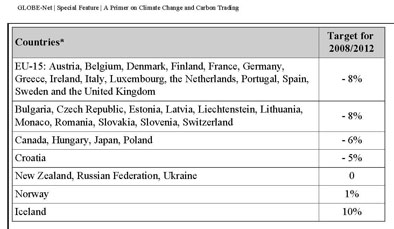
The 15 members of the pre-expansion European Union are able to redistribute their targets among themselves to reach their goal, under a provision in the Protocol known as a “bubble”. They have reached an agreement on how to do so.
Two notable non-signatory countries are Australia and the United States, which both refused to ratify the treaty on the grounds that it would curb economic growth. Other criticisms of the treaty also focuses on the fact that it does not contain binding targets for developing nations such as China and India, despite their growing share of global greenhouse gas emissions. These countries, as well as many other developing nations, are not part of Annex 1 of the Kyoto Protocol.
Members have finalized many of the rules necessary for some of the market-based investment mechanisms that the Protocol supports, such as the Clean Development Mechanism and Joint Implementation. Both are critical to the carbon trading marketplace.
The first phase of the treaty comes to an end in 2012, and members of the Protocol have committed to negotiating in anticipation of extending a revised version of the agreement.
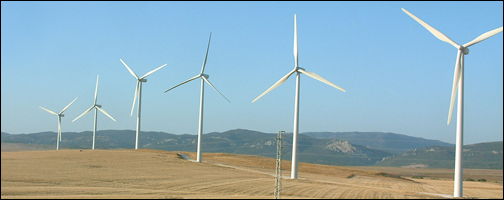
What are carbon credits and how do they work?
A ‘carbon credit’, sometimes referred to as an offset, is a permit to emit a specified amount of greenhouse gases, usually expressed in metric tonnes of carbon dioxide equivalent (CO2e). ‘Carbon credits’ are named after the most prominent greenhouse gas, carbon dioxide, but can represent other warming gases.
Carbon dioxide equivalent (CO2e) is a metric used to compare the global warming potential of various greenhouse gases. For example, the contribution of methane to global warming is rated as 21 over 100 years. This means that an emission of one metric tonne of methane is equal to emissions of 21 tonnes of carbon dioxide.
Credits can be allocated by a government as part of a plan that sets a limit on the total amount of CO2 that may be emitted in that jurisdiction, in what generally referred to as a cap-and-trade system. Companies may be awarded a number of permits, and must emit only as much GHG for which they have permits. Carbon credits can be earned through projects that reduce emissions, or by companies that cut their own emissions and thereby free up credits they possess for trading. Carbon markets exist wherein which companies may purchase and sell credits.
The World Bank has reported that worldwide trading of carbon credits was valued at $21.5 billion during the first nine months of 2006, more than double the value for all of 2005. The market suffers from volatility and will require some reforms, but is showing promise of achieving its goal of using financial incentives to curb emissions, says the bank.
As noted, the ‘Cap-and-Trade’ approach uses free market principles to achieve a reduction in emissions of a particular greenhouse gas. A government or regulatory body sets a limit on the total amount of emissions that are allowed, and issues or auctions permits (carbon credits) for that amount. Companies or organizations covered by the cap must only emit according to the permits they possess.
If companies exceed their allowable limits of emissions, they must obtain credits from other companies that have surplus credits, or by investing in projects that offset their emissions (Offset Projects). Thus, emissions are ‘capped’, and emitters can ‘trade’ credits until their emissions match the amount of permits they possess.
Although it can be argued that purchasing carbon offsets amounts to “buying one’s way out,” it is clear that companies can never eliminate 100% of their emissions. Purchasing carbon credits offer the opportunity for companies to better manage their climate impact.
Also, creating an emissions inventory, which is a necessary first step in determining how many offsets need to be purchased, is an important first step for many companies that can lead to emission reductions later.
Currently, the European Union possesses the only legally mandated carbon trading system, the EU Emissions Trading Scheme, which works as a cap-and-trade system. Other jurisdictions have made legislation in preparation for future carbon trading markets, including California and a group of seven Northeast U.S. states. Other carbon trading that does not take place under Kyoto Protocol mechanisms is based on voluntary schemes. These markets are discussed in the section “Where are other carbon trading markets located?”
Offset Project is a term describing a venture that reduces greenhouse gas emissions, such as a renewable energy development or energy efficiency upgrade. An example would be a wind power installation in an area that received most of its electricity from coal; total emissions would be reduced because less coal would need to be consumed. A wind farm in an area that uses hydroelectricity would not ‘offset’ any emissions.
For many companies, an Offset Project is one that is undertaken outside normal operations. For example, a company that owned a natural gas plant could invest in the development of a methane capture project at a landfill. While the natural gas plant would continue to produce carbon dioxide, the company would ‘offset’ those emissions by capturing methane at the landfill.
In this case, investors would hope to earn carbon credits that can then be applied against their own emissions to help them meet their targets.
Another way that the natural gas plant operator could meet their emissions targets would be to invest in pollution control technology. While this could result in the same net reduction in emissions, the company would not earn carbon credits. However, the upgrade could allow the company to sell some credits it owns under a cap-and-trade scheme, as its emissions would be lower than previously.
Carbon sequestration is another way of reducing emissions. It occurs when carbon dioxide in the atmosphere is trapped in a sink. A Sink is any natural reservoir that stores carbon. The most commonly thought-of sinks are forests and vegetation. The world’s oceans are also large sinks. This concept is applied in the Kyoto Protocol, as the creation of sinks can help countries earn carbon offsets through sequestration.
The Kyoto Protocol allows for carbon credits to be earned for sequestration projects, such as the planting of trees. For example, forestry companies that replant deforested areas could potentially earn offset credits, as forests absorb carbon dioxide as they grow. A key issue in this area is that the projects must represent an actual reduction of emissions compared to ‘business as usual’.
Many developing nations want the opportunity to earn credits by preventing deforestation. Brazil has proposed the creation of a fund that nations could tap into if they reduced deforestation to below 1990 levels, and this topic has been up for debate by the UNFCCC in the past year.
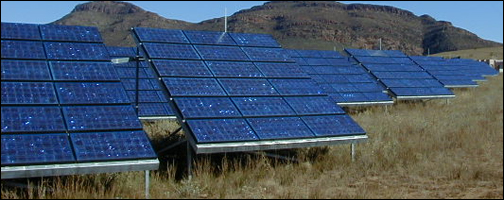
How do Kyoto Protocol carbon credits work?
There are two main vehicles under the Kyoto Protocol that govern the trading of carbon credits. These are the Clean Development Mechanism and Joint Implementation.
The Clean Development Mechanism (CDM) is a mechanism of the Kyoto Protocol that allows Annex I countries to implement emissions reducing or offsetting projects in non-Annex I countries, and earn Certified Emissions Reductions (CERs) that can be applied to meet their own targets. The general principle behind the CDM is that emissions reductions may be achieved in developing nations in a more cost-effective manner than in industrialized countries.
Joint Implementation (JI) is a mechanism of the Kyoto Protocol that allows Annex I countries to implement emissions reducing or offsetting projects in another Annex I country, and earn Emissions Reduction Units (ERUs) that can be applied to meet their own targets. Most JI projects likely will take place in Economies in Transition, such as former Soviet bloc countries, where projects are cost-effective.
Emissions Reduction Units (ERUs) are carbon credits that are earned through the Joint Implementation mechanism of the Kyoto Protocol. They allow Annex I countries to invest in emissions reducing or offsetting projects in another Annex I country, and earn credits that can be applied to their own national targets. ERUs are issued in units of one metric tonne of carbon dioxide equivalent.
Certified Emissions Reductions (CERs) are emissions credits that have been earned under the Clean Development Mechanism. When an Annex 1 country invests in a project in a developing country that reduces emissions, either by making a true emissions cut through the installation of energy efficiency or pollution control equipment, or by offsetting emissions through the creation of a carbon sink, they can apply to the UNFCCC to have the emissions reductions certified.
These credits can then be applied against the Annex 1 country’s emissions targets. CERs also are issued in units of one metric tonne of carbon dioxide equivalent.
In both cases, emissions reductions arising from any project must be verified by a competent national authority before they can be ‘certified’ and made available for trading. In Canada, the Canadian GHG Reductions Registry(c) has been developed to provide a service for organizations that wish to have GHG reduction projects reviewed and registered. The annual emission reductions and subsequent transactions (transfer of ownership, sale, or permanent retirement - formerly the Canadian GHG Credit Registry) can also tracked in this registry. The acronym RERs refers to “Registered Emission Reductions” that result from project activities.

Where are other carbon trading markets located?
The European Union Emissions Trading Scheme (EU ETS) is the world’s largest regulatory cap-and-trade regime for the reduction of greenhouse gas emissions. Members of the European Union are each required to submit national carbon dioxide quotas, and permits (carbon credits) are issued to almost 12,000 utilities and large emitters of greenhouse gases covered by the scheme. Companies are then able to buy, sell or trade the credits as needed, provided they possess enough credits to cover their own emissions. The second phase of the plan runs from 2008-2012, and countries are now in the process of submitting their plans for that period.
The Chicago Climate Exchange (CCX) is billed as North America’s first legally binding greenhouse gas trading scheme. It administers a voluntary system in which members commit to binding emissions reductions, buying and selling carbon credits in order to achieve those levels. It is supplemented by the participation of Offset projects in Brazil. The CCX has also signed an agreement with an organization in India to develop emissions reductions projects in that country. In partnership with the Montreal Exchange, CCX will help to develop the Montreal Climate Exchange, and environmental trading market for Canada.
The Regional Greenhouse Gas Initiative (RGGI) is a legally binding agreement signed by seven North-eastern US states: Connecticut, Delaware, Maine, New Hampshire, New Jersey, New York, and Vermont. Beginning in 2009, a regional cap-and-trade system will limit regional emissions to current levels, approximately 121 million tons, a level that will be maintained until 2015.
The recently passed California Global Warming Solutions Act sets emissions limits for the state, with a target of reducing emissions to 1990 levels by 2020 – about a twenty-five percent reduction from business as usual. While the legislation does not require carbon trading, it uses language to encourage the development of market mechanisms, and Governor Arnold Schwarzenegger and business groups favour a cap-and-trade approach.

Scientific evidence of human-induced climate change has mounted in recent years. While there is considerable uncertainty as to the level of contribution to climate change of human-caused greenhouse gas emissions, peer-reviewed research by the broad scientific community has generally concluded that human activity is contributing this phenomenon. As the IPCC noted in its last report, “There is new and stronger evidence that most of the warming observed over the last 50 years is attributable to human activities.” This assertion is likely to be strengthened in the next assessment in 2007, as interim research has improved understanding in many areas.
The full, long termimpacts of climate change can be hypothesized, but are generally uncertain. Potentially, they are massive and will have a drastic effect on the future of humanity. Minimally, they will be disruptive of socio-economic activities in many areas of the world and will force some adaptive measures.
Many governments, businesses, and individuals are now concerned about the future impacts of climate change, and are ready to take action. Actions of international organizations such as the United Nations are vital, and the Kyoto Protocol represents an important commitment by nearly 160 nations to reduce greenhouse gas emissions. It is however, a flawed agreement in many respects, and consequently has not been ratified by some of its original signatories, while many others are in non-compliance. Therefore, many parallel efforts should also be considered - any initiative that reduces greenhouse gas emissions in a relatively efficient manner will produce benefits.
The use of market-based mechanisms such as carbon trading is crucial to engaging the private sector to provide climate change solutions. By providing businesses with a financial incentive to reduce greenhouse gas emissions, such systems harness innovation and create a market for alternative energy and energy efficiency technologies. Companies that are early entrants into carbon trading markets can gain valuable experience which can provided them with a competitive advantage for the future.
What has been demonstrated over the last several years is that climate change is unequivocally real, that human society will have to deal with its possible impacts, and that we must do what we can to mitigate greenhouse gas emissions. With the introduction of international governmental efforts and private sector initiatives, the world is now engaging in action to deal with climate change. These efforts must continue and must be reinforced in a way that produces the environmental and economic conditions our society requires to thrive.
Clearly, climate change is an unfolding story. This Primer touches on the basics and hopefully provides a foundation upon which readers can form their opinions on the many issues involved. More importantly, the Primer may help decision makers in companies large and small to begin to make the changes that are necessary to deal with the inevitable impacts of climate change and to reduce their own greenhouse gas emissions.
FOR FURTHER INFORMATION:
The following websites provide background information which can help to form a more complete picture of climate change and related issues:
SCIENCE
- Intergovernmental Panel on Climate Change
- Arctic Climate Impact Assessment
- The Meteorological Service of Canada - the Science of Climate Change
- United States Climate Change Science Program
- The Pew Center on Global Climate Change
- Health Canada Primer on Climate Change and Health & Well-being
- US Environmental Protection Agency Climate Change page
REGULATION
- United Nations Convention on Climate Change
- Canada’s Clean Development Mechanism and Joint Implementation Office
CARBON TRADING
- World Bank Carbon Finance Unit
- Chicago Climate Exchange
- European Union Greenhouse Gas Emission Trading Scheme
- CO2e - Business-to-Business resource for climate change markets
You can return to the main Market News page, or press the Back button on your browser.

